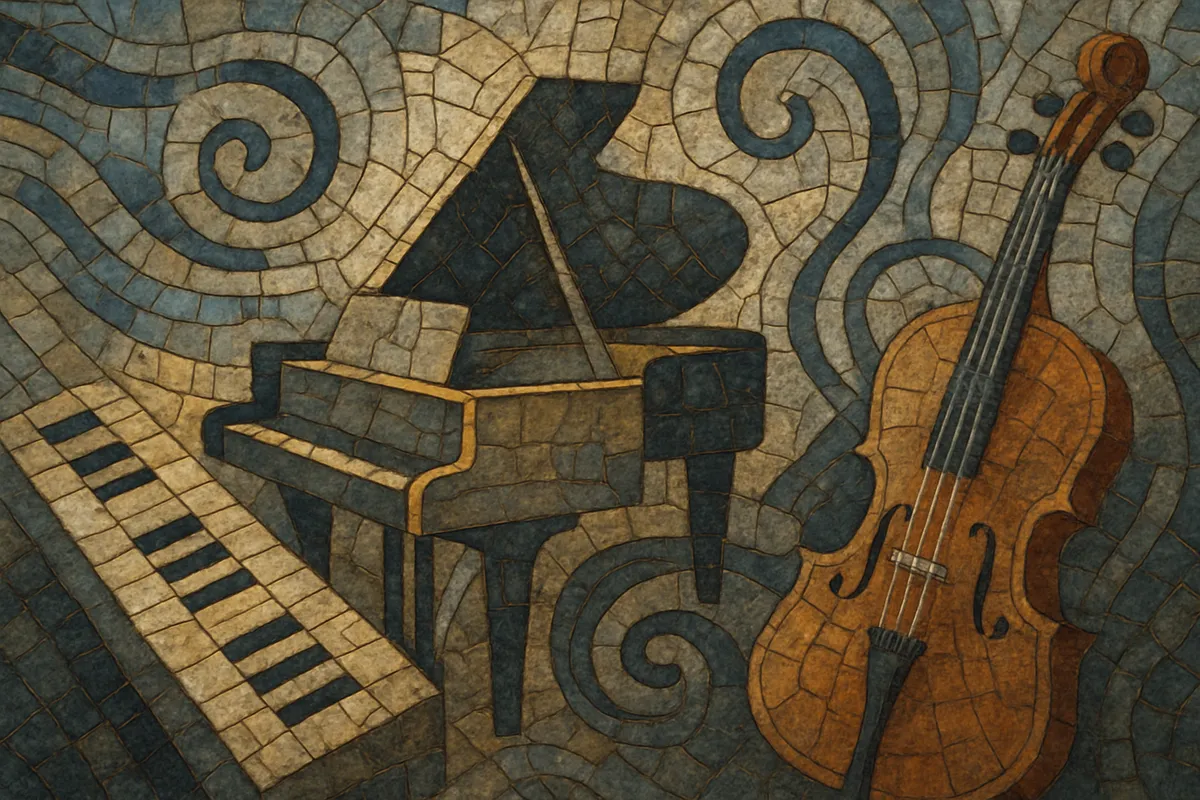
Post-classical is a contemporary strand of composition that merges the timbres and techniques of Western classical music (piano, strings, chamber ensembles) with ambient sound design, subtle electronics, and minimalist repetition.
Rather than foregrounding virtuosic complexity, it emphasizes texture, mood, and gradual development, often using felt piano, close-mic'd strings, tape hiss, and analog warmth. Motifs repeat and evolve slowly, borrowing from minimalism and post-minimalism while embracing studio-as-instrument production practices from electronic and ambient music.
The result is intimate, cinematic pieces that sit comfortably between concert hall and headphone listening, equally at home in albums, films, series, and galleries.
The groundwork for post-classical was laid by late-20th-century minimalism and post-minimalism, whose repetitive structures and harmonic clarity inspired a new generation of composer-producers. As affordable digital workstations and home studios matured in the 2000s, artists began blending classical instrumentation with ambient textures, tape processing, and restrained electronics. Independent labels—particularly in the UK and across Europe—championed these hybrid aesthetics.
Throughout the 2010s, post-classical gained traction as a distinct listening culture. Pianists and small ensembles released intimate records built around ostinatos, soft dynamics, and cinematic arcs. The style’s compatibility with screen media brought it into film and television, further popularizing its sound. Live performances expanded beyond traditional halls to clubs, galleries, and multimedia events, often featuring hybrid acoustic-electronic setups.
Hallmarks include felted or close-mic’d piano, small string groups, drones, and gentle electronic pulses. Production choices—reverb spaces, analog saturation, tape flutter, field recordings—are integral to the composition, not just post-processing. Harmony tends to be modal/triadic with slow voice-leading; rhythm favors pulse and breath over showy meter. This approach fosters a contemplative, cinematic mood that is both modern and familiar.
Post-classical now informs contemporary scoring, "cinematic classical" releases, and crossover scenes between ambient, indie, and experimental music. Its studio-forward mindset and minimalist language have reshaped how many audiences discover instrumental music, proving that classical idioms can thrive in streaming and multimedia contexts without sacrificing musical depth.

